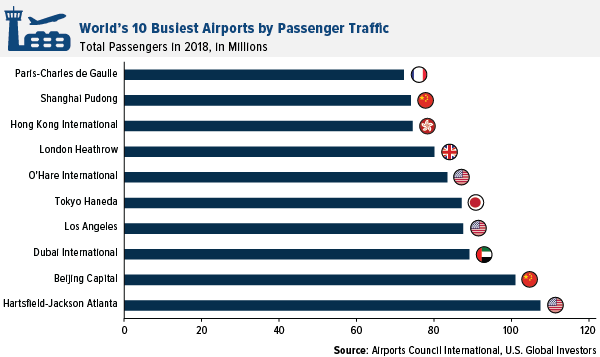
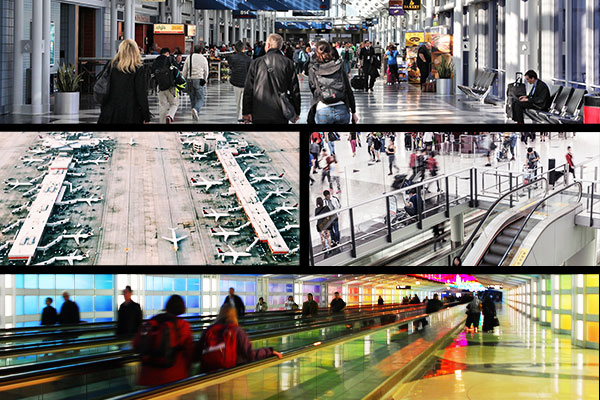
Explore the World’s 10 Busiest Airports
Although air travel isn't off to a great start this year, largely due to airlines cancelling flights on fears of the coronavirus spreading further outside China, the International Air Transport Association (IATA) predicts 2020 to be strong in terms of travel demand.

As bustling as airports already are, they’re about to get even more so, if analysts are correct.
Although air travel isn’t off to a great start this year, largely due to airlines cancelling flights on fears of the coronavirus spreading further outside China, the International Air Transport Association (IATA) predicts 2020 to be strong in terms of travel demand. The IATA estimates 4.72 billion passengers will fly – up 4 percent from an estimated 4.54 billion in 2019.
The 10 busiest airports have remained largely unchanged for the past several years, according to Airports Council International (ACI) data. Also unchanged is the massive growth in demand out of China. The world’s second busiest airport for many years now, Beijing Capital International, grew capacity an amazing 5.4 percent in 2018, while number nine on the list, Shanghai Pudong International, grew even faster at 5.7 percent.
As I wrote about last week, Chinese New Year is one of the busiest travel times of the year, with some 79 million passengers expected to take flights, up more than 8 percent from a year earlier. China is home to the world’s largest middle class, and along with India, incomes are rising and more people than ever are able to afford domestic and international travel.
Indira Gandhi International Airport is close to cracking the top 10 list, sitting at number 12 right now with almost 70 million annual travelers.
Here are the 10 busiest airports in the world, ranked by the annual number of passengers served in 2018, the latest available data.
10) Paris-Charles de Gaulle Airport (CDG)
72.2 million passengers
Named for the former French general and president, Charles de Gaulle Airport was completed in 1974 and has been the second-busiest airport in Europe for many years. Terminal 1 is known for its unique rotunda design, encircled by seven satellite buildings. The airport serves as the principal hub to Air France and is a major European hub for Delta Air Lines.

9) Shanghai Pudong International Airport (PVG)
74 million passengers
Shanghai Pudong is one of two airports in the major Chinese city. Pudong focuses mainly on international flights, while Shaghai Hongqiao International serves more domestic and regional flights. Pudong is a fast growing hub, increasing capacity by 5.7 percent year-over-year, and is the number two airport for total international air freight traffic, with nearly 3 million metrics tonnes of freight loaded and unloaded in 2018.

8) Hong Kong International Airport (HKG)
74.5 million passengers
Hong Kong International is the largest air cargo center in the world, handling more than 5 million metric tonnes of cargo in 2018. Hong Kong, a top global tourist destination, was home to massive pro-democracy protests for half of 2019. Demonstrations even took place at the airport on several occasions, causing flight cancellations and disrupting operations significantly. The city could see a reduced number of passengers after rising 2.6 percent from 2017 to 2018.
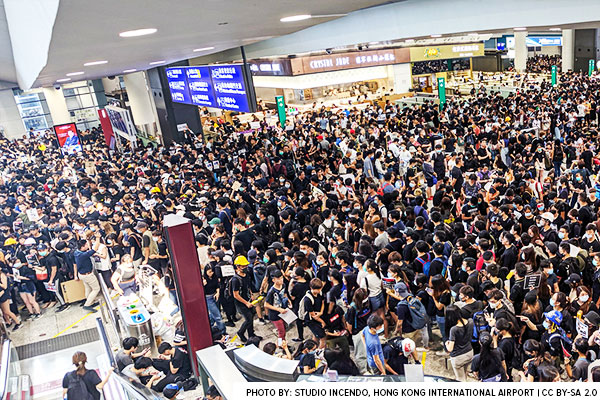
7) London Heathrow Airport (LHR)
80.1 million passengers
For years, London Heathrow was the world’s busiest airport in terms of international passenger traffic. Serving 185 destinations in 84 countries, the British airport has a high rate of foreign travelers. The airport has six terminals, but only five are open to the public. The sixth terminal is very small and only used for royals, heads of states and some celebrities.

6) O’Hare International Airport (ORD)
83.4 million passengers
Since opening in 1955, Chicago O’Hare has consistently been one of the busiest passenger hubs in the world. In terms of takeoffs and landings, rather than number of passengers, it is the busiest airport in the world with the most aircraft movements. It serves close to 40 different airlines and provides direct flights to more than 60 international destinations.
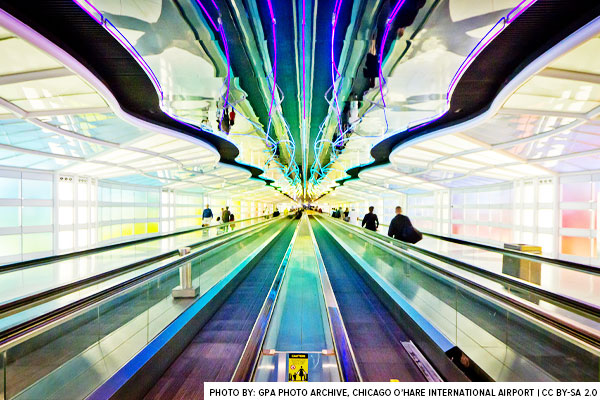
5) Tokyo Haneda Airport (HND)
87.1 million passengers
Also known as Tokyo International, Haneda Airport is the second-busiest in Asia, able to handle 90 million passengers a year. Having won the bid for the 2020 Summer Olympics, the Japanese government has increased capacity even further. Tokyo did fall to the number five spot in 2018, with Los Angeles overtaking it by just 400,000 travelers.

4) Los Angeles International Airport (LAX)
87.5 million passengers
LAX is the busiest origin and destination airport, meaning that relative to other airports, many more travelers begin or end their trips in Los Angeles than use it as a connection. The airport is home to “The Private Suite” – a members only club that costs $4,500 per year, plus a minimum of $2,700 per flight. The membership includes a separate VIP terminal that is much like flying private. Around half of members are business executives and the other half are celebrities.

3) Dubai International Airport (DXB)
89.1 million passengers
As the premier airport in the United Arab Emirates, Dubai International is the world’s busiest airport in terms of international passengers; in 2018 it served almost 89 million travelers from abroad. When Terminal 3 was completed in 2008, it was the world’s largest building, an honor it held until 2013. Dubai Duty Free, which operates out of DXB, is the most successful airport retailer, generating $1.8 billion in 2013 alone.

2) Beijing Capital International Airport (PEK)
101 million passengers
Beijing Capital is easily Asia’s busiest airport, serving 14 million more people than Tokyo International in 2018 and crossing above the 100 million mark. To prepare for the 2008 Summer Olympics, Beijing Capital added the mammoth Terminal 3, which is one of the largest buildings in the world. The airport serves as the main hub for Air China, which flies out of Beijing to more than 120 destinations. It consistently has one of the strongest capacity growth rates – increasing 5.4 percent from the year earlier.

1) Hartsfield-Jackson Atlanta International Airport (ATL)
107.4 million passengers
Opened in September 1980, Hartsfield-Jackson has remained the world’s busiest passenger airport every year since 1998. In terms of takeoffs and landings, it’s the second-busiest. Contributing to the airport’s prominence is Atlanta’s convenient location, a mere two-hour flight from 80 percent of the U.S. population. Indeed most of Atlanta’s traffic is serving domestic locations – not even cracking the list of the top 20 airports for international passenger traffic.
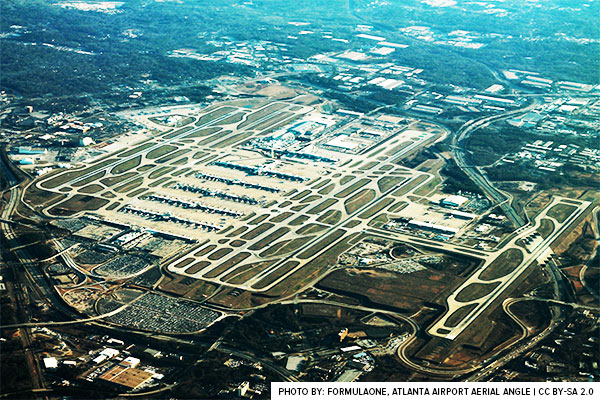
Although the above data is from 2018, if you look at data from the first half of 2019, the top 10 rankings remain the same.
Want to know how airports actually make money and fund expansions? Click here to read.
All opinions expressed and data provided are subject to change without notice. Some of these opinions may not be appropriate to every investor.
Holdings may change daily. Holdings are reported as of the most recent quarter-end. The following securities mentioned in the article were held by one or more accounts managed by U.S. Global Investors as of (12/31/2019): Delta Air Lines Inc.






























